For the past week that I’ve been writing this series on defamation law in Minnesota, I’ve been focusing on the letter and spirit (as captured in case law) of the law.
Today, I’m going to go down a tangent, and talk about the mechanics of the law – specifically, how legal records work.
Or, rather, how they don’t work.
When you to google and search, for example, for “DUI Records Minnesota“, you get quite a few sites; once you get out of the ad hits with the pink backgrounds, you are helpfullly presented with quite a few options purporting to allow you to “search Minnesota DUI records online!”.
Sounds promising! And after all, isn’t that the wonder of the Internet? That all information is instantly available online?
I tried the first one after the ad links; “duirecords.org“, which promises that you can “Search MN DUI Public Arrest Records Online”. And just to be curious, I typed in my own name.
And I got back something that made my heart sink into my stomach:

…that’s me!
But then I thought about it for a moment. I’ve never had a DUI. I’ve never had any form of impaired driving contact with the police – I’ve never been pulled over on suspicion of any sort of drunk driving. Nothing, Zero. Zip. Never.
There’s a reason for that. I don’t drive drunk. Indeed, I rarely have more than two drinks at a sitting.
And yet this site – this site that purports to “Search Public Records” to return DUI convictions – was saying that I’d had a DUI!
So I wondered – given that nearly 10% of Minnesotans do have a drunk driving record, what other Minnesotans have been convicted of driving under the influence?
I picked a few names, completely at random: I started with Brian “Saint Paul” Ward, of Fraters Libertas, a bunch of known drinkers:
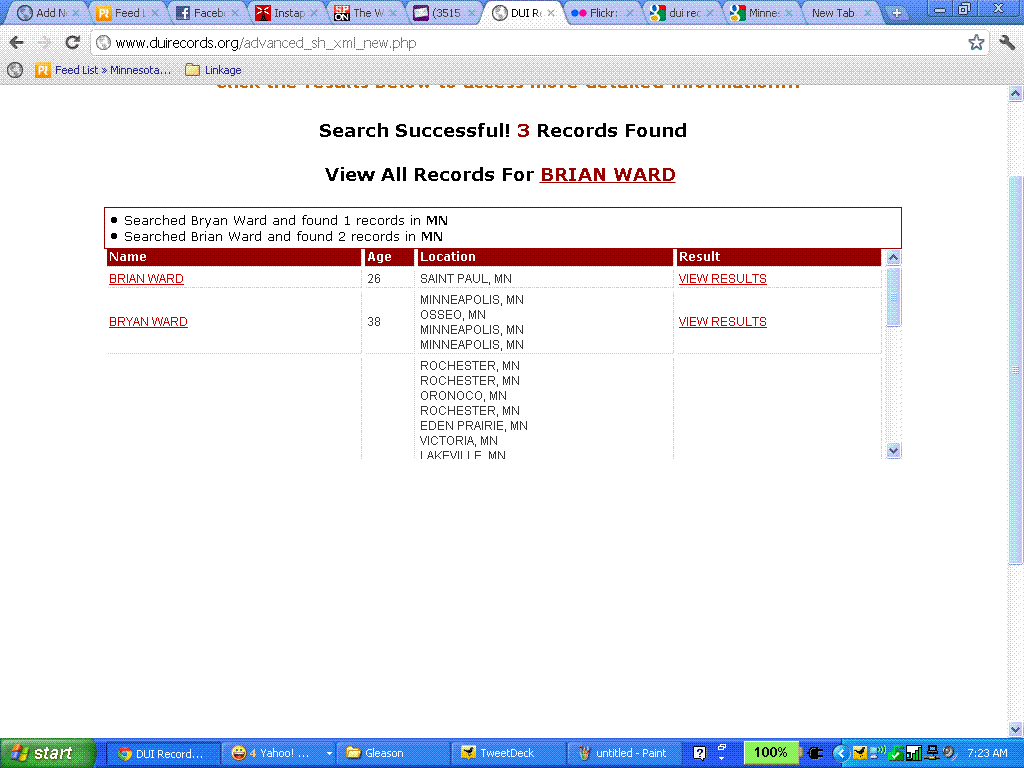
Wow.
Next, I tried my friend and radio cohort, Ed Morrissey, who has publicly disclosed he lives in Eagan.
And I was shocked:

Holy crap. You think you know a guy!
Next – since our last gubernatorial race was settled by a bogus “DUI” charge against Tom Emmer, I thought I’d see if what was fair for the goose were fair for the gander. Does Mark Dayton have a “drunk driving record?”
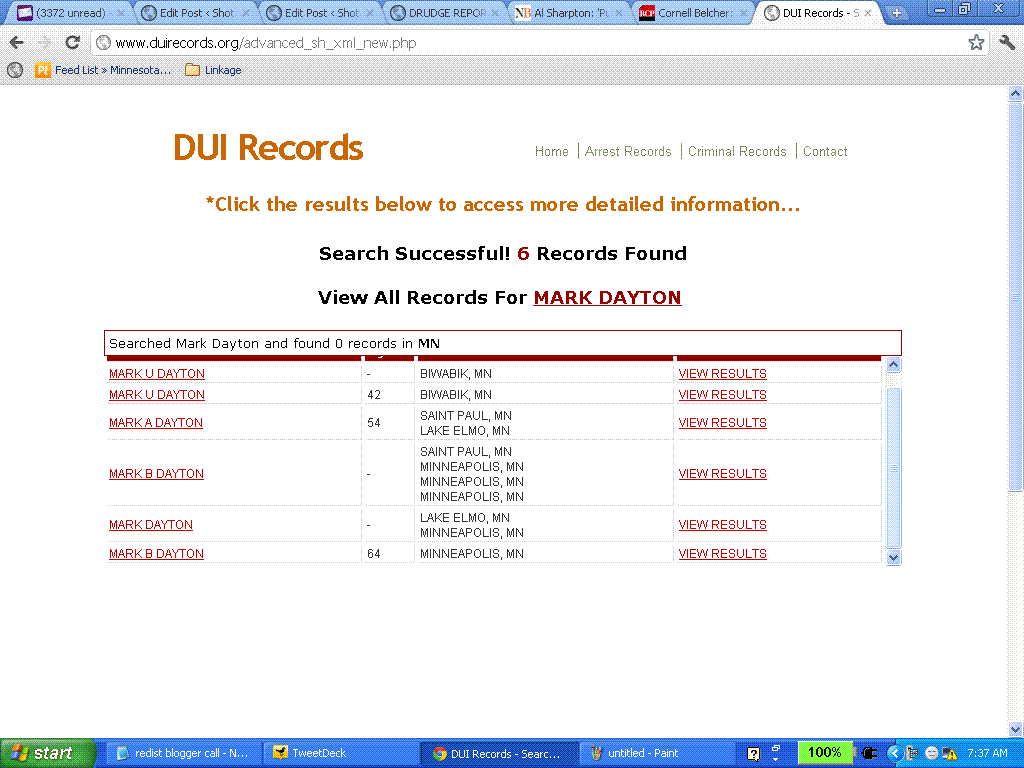
Wow! Someone tell the media!
But I’m starting to smell a rat. It almost looks as if this site will turn up a record on almost anyone.
I tried Archbishop John C. Nienstedt, the supreme poobah (I’m a little fuzzy on the terms of the Catholic hierarchy) of the Archdiocese of Minneapolis and Saint Paul:

And, finally, just out of a fit of untrammelled serendipity, I entered the name of my favorite Twin Cities’ blogger, a person whose keen insights, nimble wit and sparkling writing have enlivened many an idle morning, Professor William Gleason, a chemistry professor at the U of M:
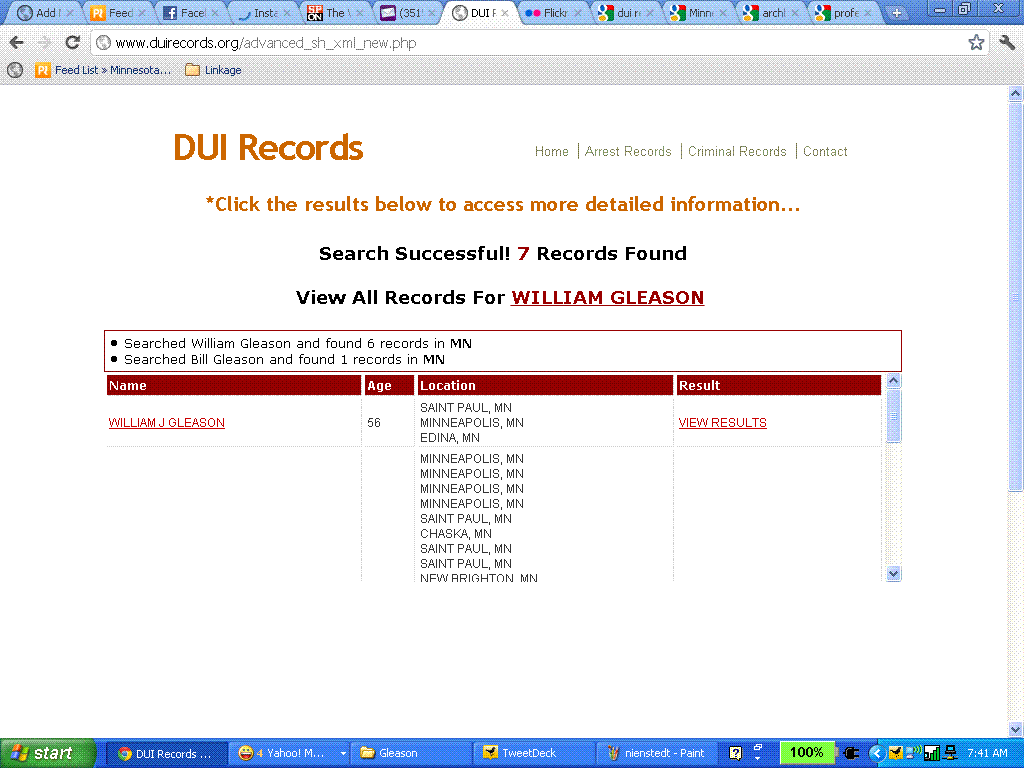
Note: Someone pointed out that I got Gleason’s middle initial wrong. No, I did not! Go search the “database”; there are a plethora of William Gleasons out there! Dozens! Including the one with Professor and Blogger Gleason’s middle initial!
It seems everyone has a DUI!
So I clicked on the “results” link:
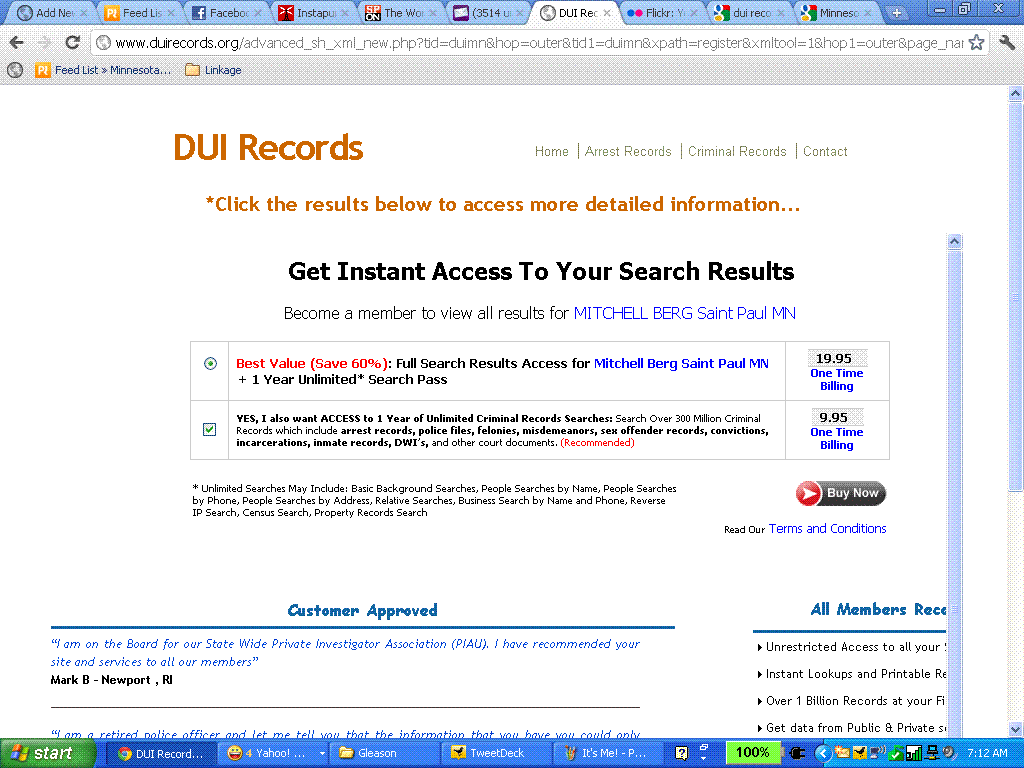
What? I’ve gotta pay for public records?
Well,no. The site above is an advertising site. Indeed, it’s a form of spam.
Indeed, if you google virtually any form of legal activity – divorce, criminal records, bankruptcy – you will find pages and pages of these spam and scam sites, all designed to get you to pay money for what are, at most, slightly repackaged Google searches.
What “duirecords.org” does is take virtually any input you give it, run a search on, say, Google, spits back the results to make it look like it has something, sucks you in to a link to make you pay for…
…well, that’s as far as I pushed it. I’m not going to pay to find out.
Now, you can get public records – or at least, names and charges and dates – from the official Minnesota court records (you have to click “Begin Search”, and accept the disclaimer). Wherein you’ll find that in the past 15 years, there has been no “Mitchell P. Berg” convicted of DUI anywhere in Minnesota – and that I’ve been pulled over for expired tabs and forgetting my insurance card.
Expensive? Dumb? Sure – but not DUI.
———-
The takeaway is this: Say I were to write “John Doe, Age 46, of Mazeppa, was convicted of DUI” based on the output of the “DuiRecords.org” website…:
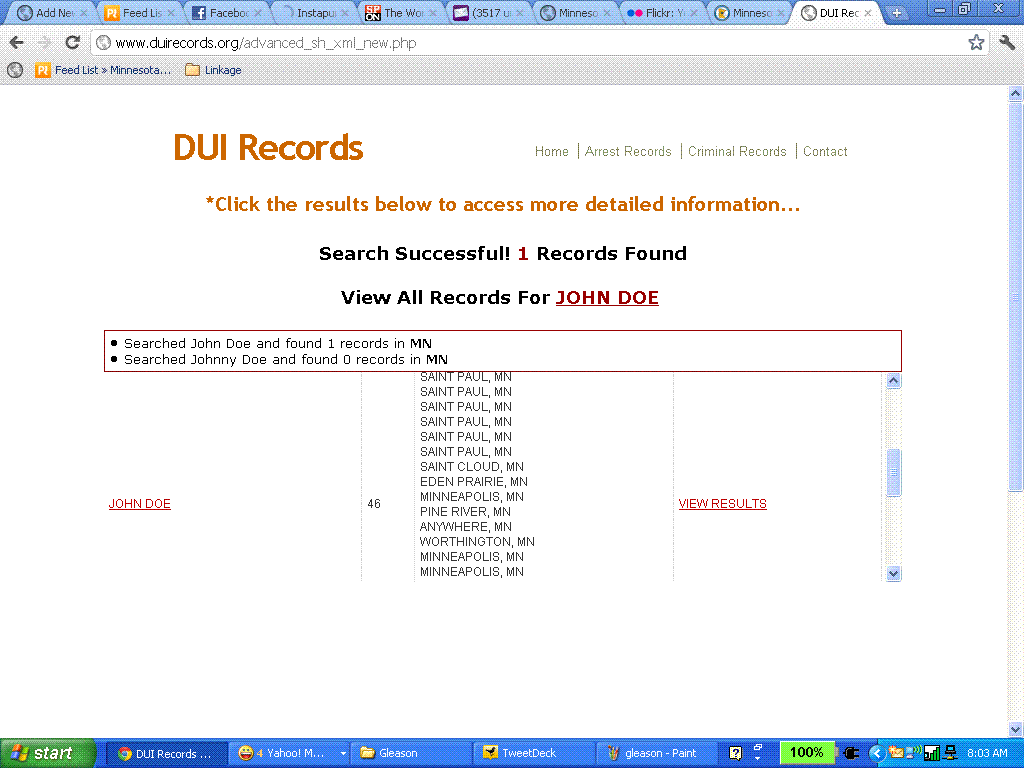
I specifically disclaim any insinuation that any Mr. Doe of Mazeppa has ever committed any crime, by the way. This is just an example.
… believing it to be a genuine public records website, rather than, as we’ve shown, an advertising site that turns up “records” on anyone.
And ten, say, someone wrote to tell me, specifically, that “your “source” on Mr. Doe is an ad site, not a source of actual public records?”
And yet, I doubled down on my story – redoubling my assertion that Mr. Doe had been convicted of DUI? Rather than retracting it and apologizing to Mr. Doe?
Well, that could fairly be seen as “failing to take reasonable care” to ensure that a defamatory statement (remember, accusations of infamous crimes are defamation per se under Minnesota law) is accurate”.
OK. There is no serendipity at all in this series. There’s a point.
We’re getting to it.








